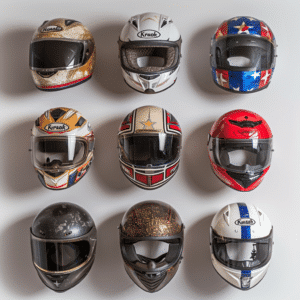
Are mopeds dangerous? This pressing concern for potential and current riders alike is justified, given the unique vulnerabilities of these vehicles. Dealing with reduced visibility and lower stability, moped riders face genuine risks. In the following sections, we navigate through these dangers, backed by statistics, and arm you with essential safety tips to enhance your riding experience.
Key Takeaways
- Mopeds present unique safety challenges due to their limited speed, reduced visibility, smaller size, and inherent stability issues compared to larger motor vehicles.
- Accidents involving mopeds are more frequent per mile than those involving motorcycles, with causes ranging from collisions with other vehicles, hazardous road conditions, substance abuse, and rider inexperience.
- Ensuring safety on a moped involves a combination of rider responsibilities including adhering to traffic laws, wearing helmets and protective gear, regular maintenance checks, defensive driving, and understanding local legal requirements for riding and registering mopeds.
Contact us today and we will help you get the compensation that you deserve.
Moped Safety Overview
Mopeds, characterized by their low-powered engines and two wheels, have specific safety considerations distinct from other motor vehicles. Their limited speed, reduced visibility, and stability concerns contribute significantly to their performance and safety on the road.
Engine Power and Speed Capabilities
Mopeds typically come with a 50cc engine or smaller with less than 2-brake horsepower, restricting their top speed and maneuverability, especially in heavy traffic. This limitation often means that mopeds can’t keep up with the flow of traffic, particularly if the posted speed limit exceeds 30 mph. Riding at speeds over 20 mph, or on roads with posted speeds over 30 mph, increases the risk of severe injury in the event of a moped crash.
Accordingly, it is vital for riders to understand their moped’s limitations and select routes that are best suited to their moped’s capabilities. Riding on roads with lower speed limits, less traffic, or designated bike lanes can contribute significantly to moped safety.
Visibility on the Road
One of the challenges moped riders face is visibility on the road. Due to their smaller size, mopeds may not be as visible to other drivers, particularly in adverse conditions such as rain or darkness. Moped riders face a higher risk of severe injuries when involved in crashes that occur in poorly lit areas or during the night. Smaller vehicles like mopeds may be hidden by environmental features or other traffic, increasing the likelihood that they will not be seen by other drivers.
Moped riders can enhance their visibility by wearing bright or reflective clothing, which makes them more noticeable to other road users. Using headlights and turn signals can also enhance visibility, particularly in low light conditions.
Stability and Handling
Mopeds, with their smaller tire size and design, have inherent stability issues. Their smaller tires make them more vulnerable to hazards on the road. Hazardous road conditions such as wet surfaces, gravel, or potholes can lead to mopeds skidding or losing control.
As such, it is crucial for riders to maintain a safe speed, stay alert to their surroundings, and avoid potential road hazards. Regular tire checks and maintenance can also contribute to improved stability and safer handling.
Assessing the Risk: Moped Accident Statistics
Accidents are an unfortunate reality of road traffic, and mopeds are no exception. In fact, mopeds have a higher per-mile accident rate than motorcycles. The majority of these accidents are caused by collisions with other vehicles, often due to the other drivers’ failure to see the moped.
Other common causes include hazardous road conditions and rider inexperience.
Frequency of Moped Accidents
Between 2002 and 2008, there were 5,660 moped crashes in the state of Florida alone. And while no specific statistics regarding the frequency of moped accidents compared to other vehicles were found, the per-mile accident rate is higher for mopeds than motorcycles.
These statistics underscore the need for motorcycle riders and moped riders to prioritize safety precautions. Being aware of the risks and following safety guidelines can markedly lower the likelihood of being involved in an accident.
Common Causes of Moped Accidents
Substance abuse doubles the likelihood of severe moped accidents. Furthermore, moped riders are at an increased risk of severe accidents when traveling on unpaved roads, divided highways, or roadways with four or more lanes. Risky riding behaviors, including experiencing a lane splitting accident and weaving in traffic, also increase the probability of being involved in a moped accident. A lane splitting motorcycle can face similar risks in these situations.
It’s alarming to note that eighteen percent of moped crashes, which can be considered a type of motorcycle accident, result in severe or fatal injuries. This statistic emphasizes the need for responsible riding practices, like abstaining from substance abuse, obeying traffic laws, and utilizing protective gear.
The Human Factor: Rider Behavior and Moped Safety
The human factor plays a significant role in moped safety. Rider behavior – such as how they navigate congested traffic, comply with traffic laws, and the use of protective gear – can directly affect the odds of accidents.
Importance of Proper Training
In Nevada, particularly in Las Vegas, riders can opt for an approved Motorcycle Safety Foundation course or pass motorcycle written and skills tests to get a motorcycle license, also known as a Class M driver license. The state-run Motorcyclist Safety Program is designed to make motorcycle training accessible and maintain high training standards, adhering to Nevada motorcycle laws.
Feedback from riders emphasizes that adequate training substantially enhances riding skills, both on and off the road. Furthermore, Nevada motivates moped riders to participate in safety courses by offering to waive fines for lacking a Class M endorsement upon course completion.
Helmet Usage and Protective Gear

Protective gear, encompassing:
- Helmets
- Body armor
- Gloves
- Leather clothing
can significantly reduce the extent of injuries in the event of an accident. Therefore, the use of protective gear goes beyond being a legal obligation and forms a vital part of moped safety.
Following Traffic Laws
Moped riders in Nevada are typically required to use the rightmost lanes or shoulders if their moped’s maximum speed is less than the posted speed limit. This regulation directly impacts their handling and navigation in heavy traffic. In addition to lane restrictions, moped riders must use the extreme right-hand lane of multi-lane roads unless performing specific maneuvers such as preparing for a left turn, or when the right-hand lane is deemed unsafe. With motorcycle lane splitting legal in some states, it’s important to note that Nevada’s regulations differ, and Nevada lane splitting is not permitted for moped riders.
Adhering to traffic laws, including observing speed limits and obeying regulations regarding lane sharing, is crucial for the safety of moped riders on public roads. Comprehending and complying with these rules can notably decrease the risk of accidents, so it’s essential to follow traffic laws.
Legal Aspects of Moped Riding
Understanding the legal requirements for moped riding is an essential part of safe and responsible moped ownership. These requirements, which encompass licensure, registration, and equipment information, ensure that mopeds are properly tagged and identifiable on the road, and that riders are adequately protected in the event of an accident.
Moped Licensing Requirements
In Nevada, moped riders are required to have a driver’s license to operate a moped on public streets. However, unlike motorcycles, mopeds do not require a Class M license. Moped operators must also complete a one-time registration for their vehicle that remains valid for as long as they own the moped.
While the licensing requirements for mopeds are less stringent than those for motorcycles, they still ensure that riders have a basic understanding of road rules and safety guidelines.
Insurance and Registration Needs
Moped riders must register their vehicles in Nevada, which includes obtaining a distinctive license plate. The fees for registration total approximately $60. Mopeds that meet certain state DMV requirements are issued a title. If not, only registration will be provided.
While moped riders in Nevada are not required by Nevada law to carry liability insurance for their mopeds, it’s still a good idea to consider insurance. It provides financial protection in the event of accidents or theft.
Ensuring proper insurance coverage and moped registration are essential aspects of responsible moped riding and compliance with legal standards.
Mitigating Dangers: Safety Tips for Moped Riders
Moped riders can enhance their safety on the road through specific safety measures. These include employing defensive riding techniques, regular maintenance checks, and adhering to traffic laws. By implementing these practices, riders can minimize the risks associated with moped riding and ensure their safety and the safety of others on the road.
Defensive Riding Strategies

- Avoid traveling in blind spots of other vehicles
- Use lights and wear bright clothing to stay visible to other motorists
- Have an exit strategy to avoid being boxed in and maintain a safe space from other vehicles
By following these strategies, you can help ensure your safety while riding.
Turn signals and hand signals should be used together to clearly communicate intended movements to other riders and drivers. Some tips for safe riding include:
- Staying calm
- Giving others the benefit of the doubt
- Maintaining high situational awareness
- Avoiding road rage
- Reducing accident risks
- Being prepared for unexpected behaviors at intersections and driveways.
Regular Maintenance Checks
Regular maintenance checks are a key part of moped safety. Using the T-CLOCS Inspection Checklist for a pre-ride check ensures that the moped is in safe operating condition before use. Riders should regularly verify that all essential safety equipment, such as:
- headlights
- brake lights
- brakes
- mirrors
are functioning correctly to maintain safety on the road.
In Nevada, mopeds must pass an inspection at either a DMV office or Sheriff’s Office for a nominal fee to confirm that they meet safety standards. Regular inspections and maintenance checks not only ensure that your moped is roadworthy but also provide an opportunity to spot and rectify any potential issues early.
When Accidents Happen: Seeking Legal Help
Despite all precautions, accidents can still happen. In such unfortunate events, it’s crucial to know what steps to take, including:
- Seeking medical attention
- Documenting the accident scene
- Reporting the accident
- Contacting insurance companies
- Understanding negligence.
Documenting the Accident Scene
In the aftermath of a car accident, it’s important to gather as much evidence as possible. This includes interviewing witnesses for their accounts, gathering their contact information, and securing video footage from nearby cameras, if possible.
Promptly seeking legal counsel after a moped accident is also important to ensure all evidence is preserved accurately and to navigate potential legal claims within the relevant statutes of limitations.
The Role of a Personal Injury Attorney
A personal injury attorney can offer invaluable assistance following a moped accident. These professionals specialize in representing parties injured in moped accidents, taking responsibility for:
- Legal proceedings
- Compensation claims
- Comprehensive investigations to collect evidence
- Advocating for the injured client’s interests in negotiations with insurance companies.
The attorney works to recover compensation for various damages incurred by the client, including immediate and future medical expenses, lost wages, and other related losses. To establish a negligence claim, the attorney must prove the four main elements: duty of care, breach of duty, causation linking the breach to the injury, and actual damages.
Frequently Asked Questions
Is a moped more dangerous than a bike?
Yes, a moped is more dangerous than a bike due to its less stability caused by smaller wheels, making it more prone to falling over or flipping.
What is the mortality rate for mopeds?
The 30-day mortality rate for moped drivers is 0.62 per 100,000 persons. This indicates a lower risk compared to motorcyclists.
How can I be safe on a moped?
To stay safe on a moped, always wear a helmet, bright or reflective clothing, and use reflective tape on your clothing, helmet, and vehicle to increase visibility. Additionally, avoid riding in another driver’s blind spot and maintain a safe distance from vehicles ahead of you.
Why is lane splitting illegal in Nevada?
Lane splitting is illegal in Nevada because NRS 486.351(1) prohibits motorcycles from operating between adjacent lanes of traffic to prevent swerving in and out of multiple lanes of traffic. This law aims to improve safety on the roads.
What are the common causes of moped accidents?
Moped accidents are commonly caused by collisions with other vehicles, substance abuse, hazardous road conditions, and rider inexperience. Be cautious and adhere to road safety guidelines at all times to avoid accidents.
Last updated Thursday, June 20th, 2024 | Written by Anthony B. Golden






